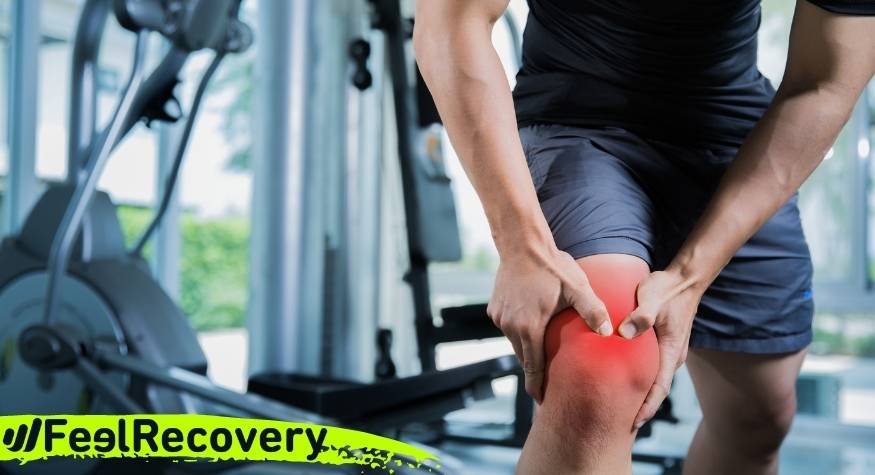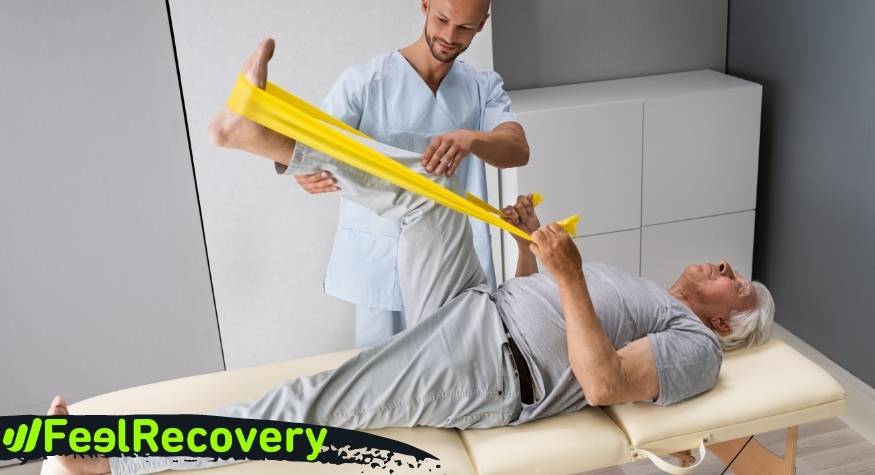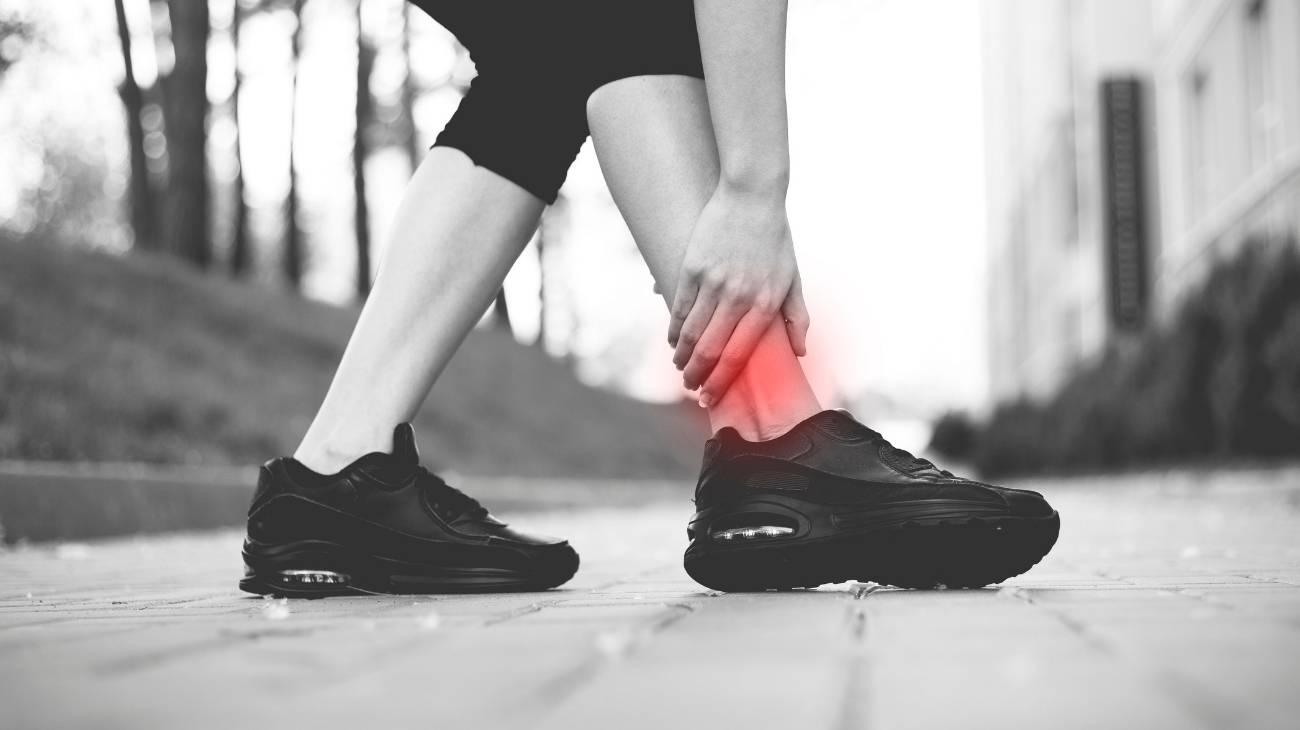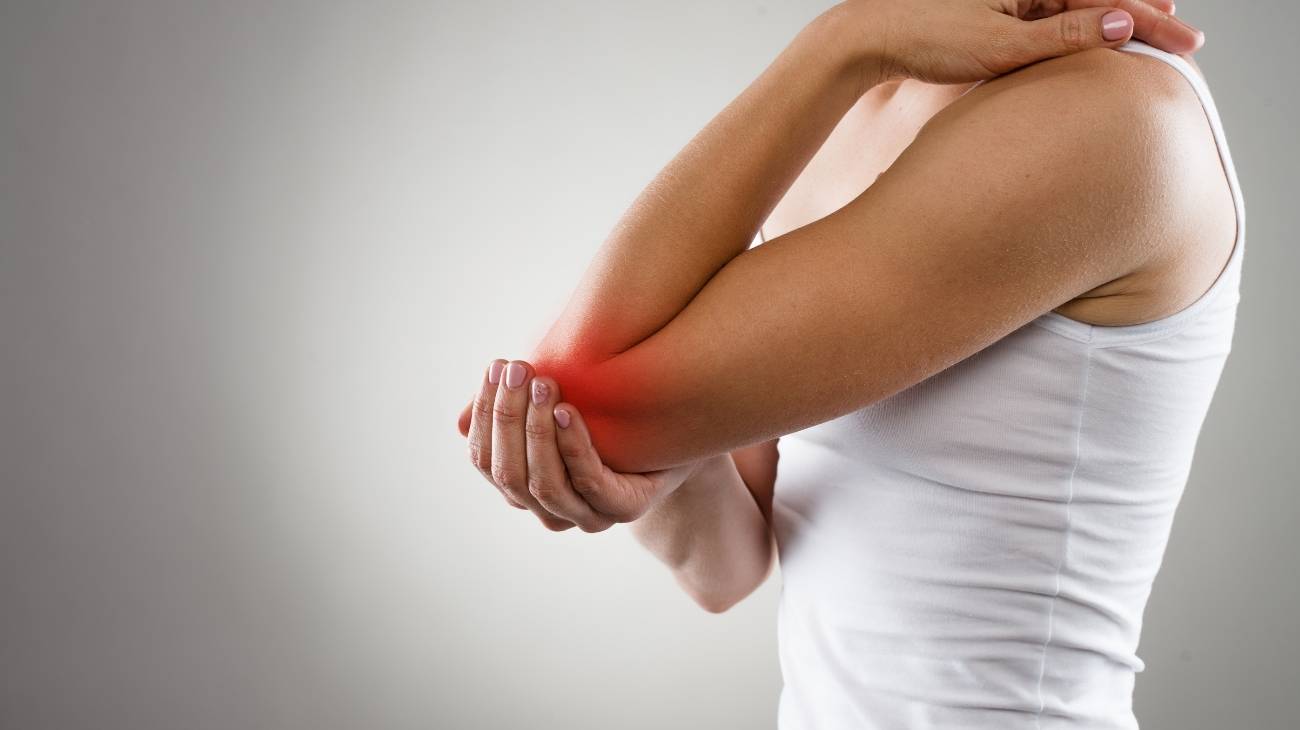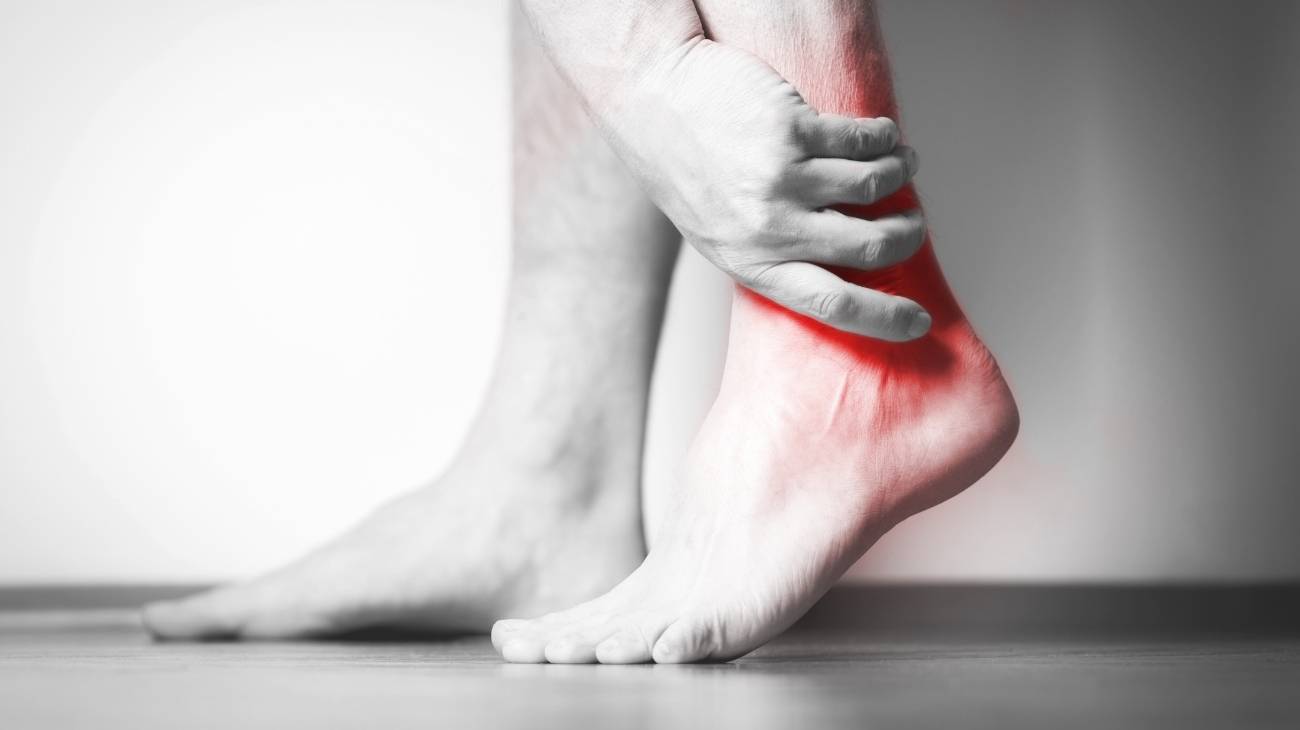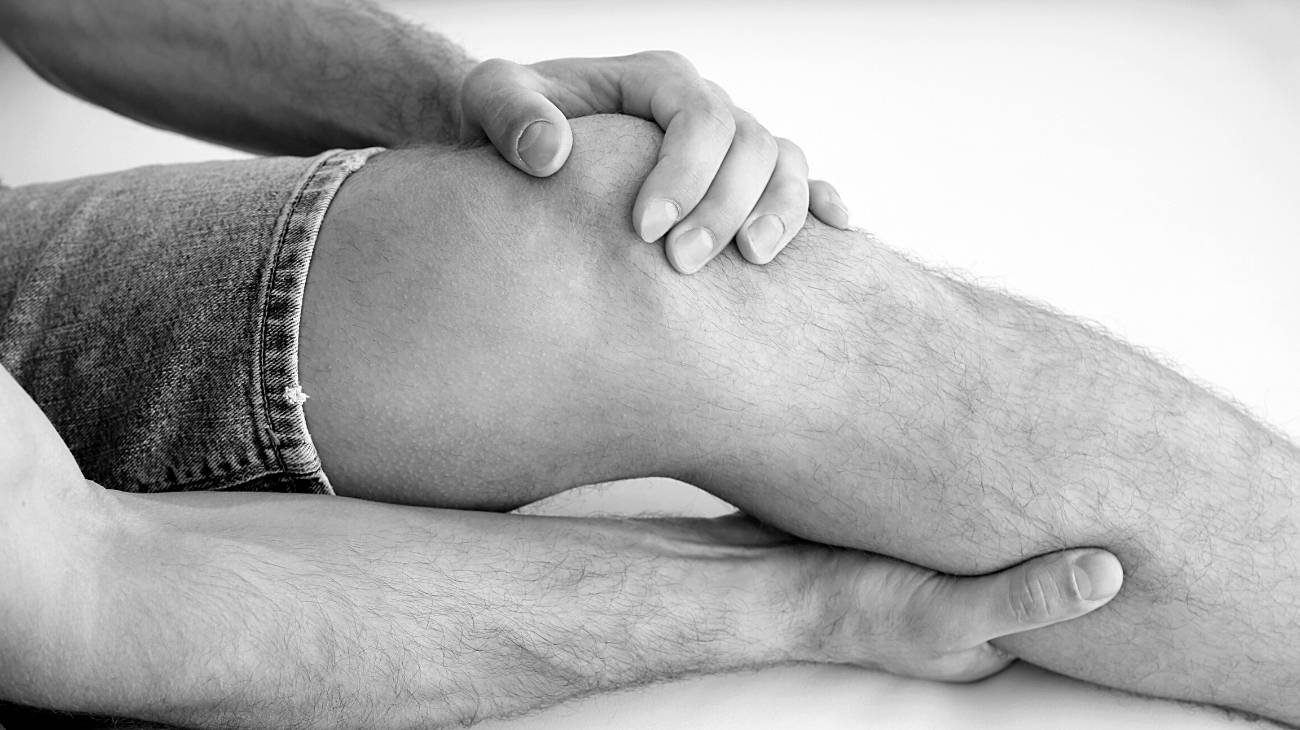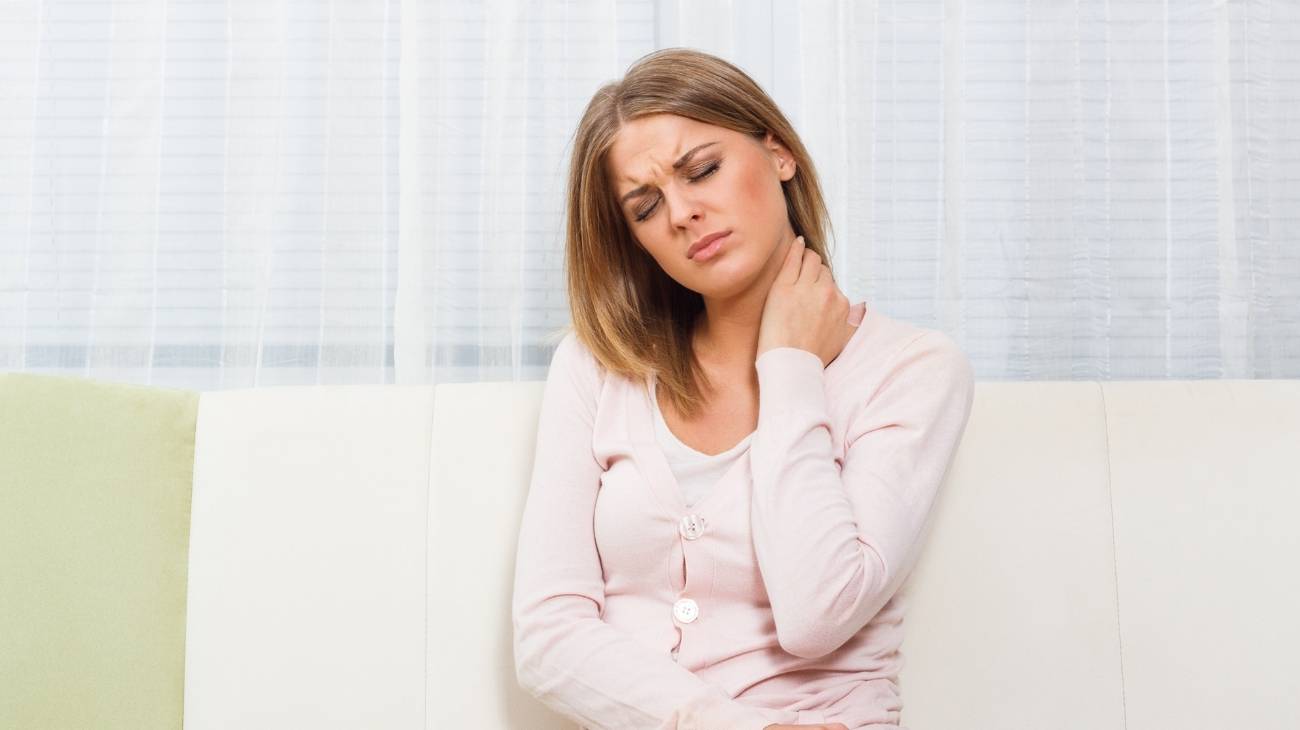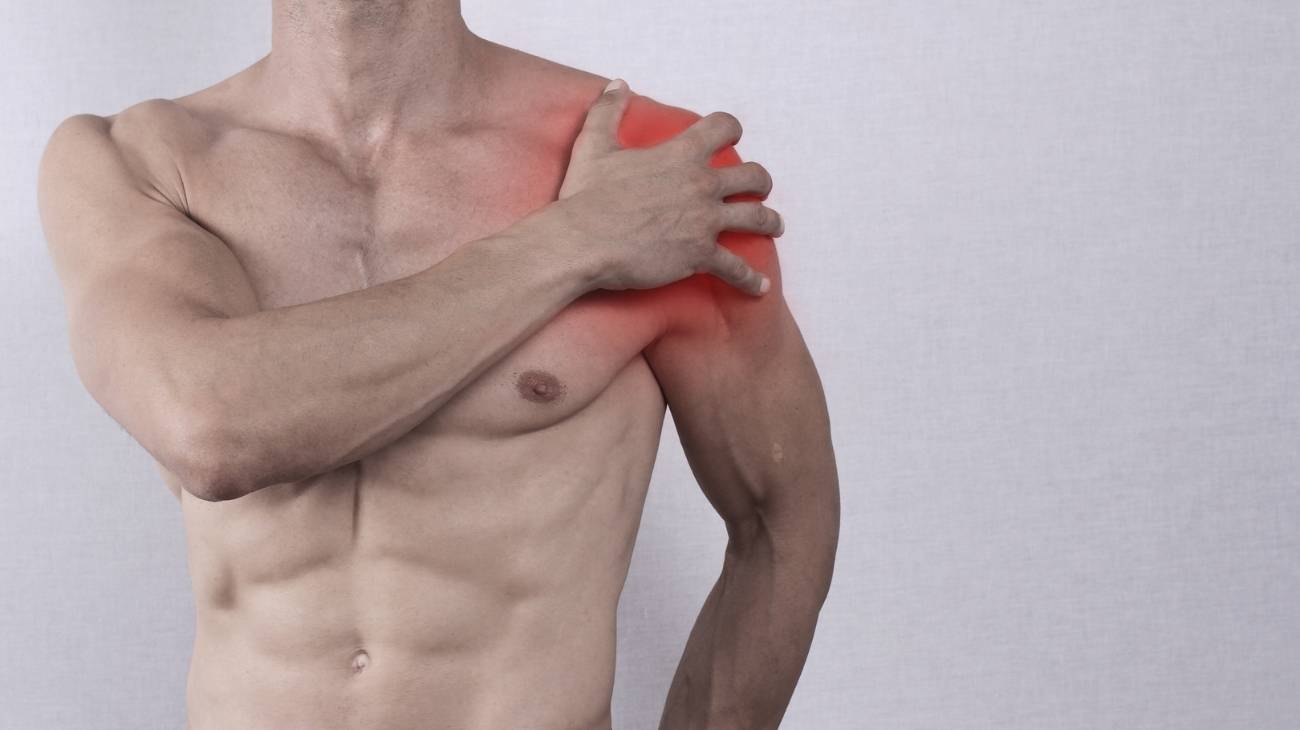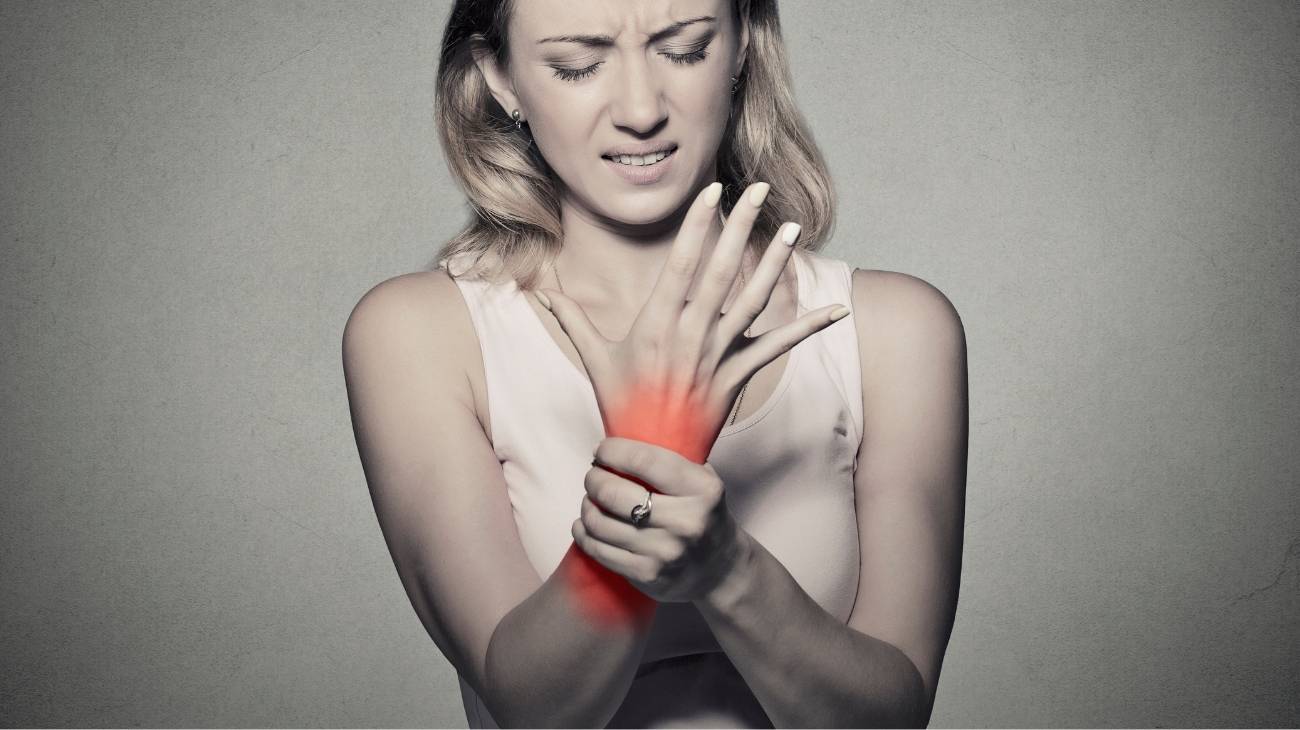- What is a knee sprain and what degrees are there?
- What are the causes and risk factors for a sprained knee?
- Best products for knee sprain
- Main symptoms that warn us that we have a knee sprain
- What treatments are available to improve the symptoms of a sprained knee?
- What are the most effective prevention methods for knee sprains?
Ligaments are the very strong, elastic fibrous connective tissue that link bones together to provide stability within a joint. In the case of the knee, the knee is made up of four ligaments, and when one or more of them are suddenly stretched, a sprain results.
In that sense, knee sprains are considered to be a pathology of considerable severity, as the ligaments support the knee and keep the joint in the correct position. It is therefore worth taking a closer look at this type of sprain, its causes, symptoms, treatments and prevention methods.
What is a knee sprain and what degrees are there?
The central joint of the lower limbs is made up of four ligamentous portions: the internal lateral ligament, the external lateral ligament, the anterior cruciate ligament and the posterior cruciate ligament. The function of these ligaments is to keep the knee stable by binding the bones within the joint together.
However, when one or more of these knee ligaments suffer a sudden stretch or tear, a knee sprain or strain is automatically triggered. This pathology consists of a sudden injury that causes partial or total rupture of the collateral ligaments when they are suddenly stretched.
However, depending on the diagnosis and/or level of severity, there are three types of knee sprains from which health professionals can apply a relevant treatment to subject the patient to rehabilitation and normalise the functioning of his or her knee.
Thus, in terms of classification, the three known grades of sprains in the central joint of the lower limbs are:
Grade 1
This is the mildest of all deferred knee sprains. It consists of overstretching of the ligaments with very few torn fibres. As a result, it does not lead to a rupture of the ligamentous tissue and the patient is therefore able to perform full movements in the joint. Therefore, the pain that occurs is very mild, there is little swelling and no associated joint laxity is triggered, fortunately.
Grade 2
Basically, a Grade 2 knee sprain is one that causes a partial tear of the ligaments (about 50% of the ligamentous tissue). In other words, it is characterised by a fragmentary rupture of the ligamentous portion and this tends to produce greater pain in the affected area. In addition, the inflammation process is deeper or more severe, there is also slight joint instability and bruising or some deformity.
Grade 3
This is the most severe knee sprain in the classification. It shows either a complete tear of the ligamentous portion or more than 50% of the ligament. Consequently, this type of sprain manifests itself once between one and two thirds of the ligament fibres are torn. As a result, the injured individual suffers severe pain, much more pronounced swelling, ecchymosis and severe deformity, as well as functional impotence of the impacted knee.
What are the causes and risk factors for a sprained knee?
In general, a knee sprain occurs when hyperextension of the knee joint occurs suddenly and abruptly. However, beyond this, there are various known causes and risk factors that trigger the symptoms of a sprain of this kind.
Main reasons for partial or total rupture of the ligaments in the knee:
- Playing sports such as football, basketball, handball, karate, skiing, etc. is one of the main reasons for knee sprains. Because, due to their movements, they frequently trigger this type of injury.
- A blow or direct trauma to any part of the knee also tends to cause a sprain in this joint. Depending on the impact, the degree of severity is determined.
- If the patient stumbles and falls on the knees while they are bent or is aggressively thrown to the ground, a sprain will certainly manifest itself.
- Another of the most common movers is abnormal and violent movements with the central joint of the lower limb. For example: landing after a big jump, a quick twist of the joint with the foot on the ground, or any activity that creates a twisting motion in the knee while the foot remains locked.
- Sudden running, jumping, stopping or changing direction almost always causes knee sprains.
- Excessive and/or sudden increases in physical activities increase the risk of suffering from a condition in this category.
- Lack of coordination and flexibility problems on the part of a person also lead to sprains in many cases.
- Inadequate strain on the muscles and associated ligaments can increase the risk of sprains in this part of the body.
- If a person has muscle breakdown, he or she is at greater risk of injury.
- Other patients have developed this pathology by not warming up and stretching properly before starting a sport.
Best products for knee sprain
Bestseller
-
Microwave Wheat Bag for Back Pain Relief (Extra Large) (Hearts)
£24,95 -
Microwave Wheat Bag for Back Pain Relief (Extra Large) (Oxford)
£24,95 -
Microwave Wheat Bag for Back Pain Relief (Extra Large) (Sport)
£24,95 -
Microwaveable Wheat Bag for Pain Relief (Hearts)
£20,95 -
Microwaveable Wheat Bag for Pain Relief (Oxford)
£20,95 -
Microwaveable Wheat Bag for Pain Relief (Sport)
£20,95 -
Wheat Bag for Microwave Classic Bottle Shaped (Hearts)
£20,95 -
Wheat Bag for Microwave Classic Bottle Shaped (Oxford)
£20,95 -
Wheat Bag for Microwave Classic Bottle Shaped (Sport)
£20,95
Main symptoms that warn us that we have a knee sprain
In order to recognise a sprained knee, there are several signs and indications typical of the symptoms of this type of injury that allow us to differentiate it from other similar conditions in order to prescribe the appropriate treatment that can speed up the recovery process.
Symptoms of a sprained knee:
- Pain in the region of the knee ligament: This is continuous when the patient tries to walk and its severity depends on the level of severity of the sprain.
- Reduced joint range of motion and stiffness: (limited joint flexibility).
- Swelling and redness in the knee area: The more acute the injury, the greater the swelling.
- Bruising or haematomas caused by internal bleeding that is triggered by the trauma.
- Painful crunching or popping in the joint that the patient can feel and hear.
- A noticeable tenderness to touch in the knee.
- Inability to stand on the affected leg.
What treatments are available to improve the symptoms of a sprained knee?
Fortunately, people suffering from a sprained knee can alleviate their pain and all the discomfort caused by various treatments that are ideal for regulating the functioning of this part of the body.
We will introduce you to the different alternative therapies that help to accelerate the rehabilitation process effectively:
Alternative and complementary therapies
There are several complementary therapies that are characterised by providing an analgesic, anti-inflammatory and relaxing effect to alleviate the symptoms of a sprained knee.
- Heat and cold therapy: By default, cold has the ability to reduce pain and inflammation, so it is recommended to alleviate musculoskeletal pathologies. Heat also has pain-relieving benefits and helps to increase circulation. As a result, the combination of these temperatures is used as a therapy to improve the symptoms of a sprained knee, as it restores mobility in a short time. To implement it, the technique consists of applying cold compresses to the area for 15 to 20 minutes and alternating with hot compresses for the same amount of time. This can be done two or three times a day for 48-72 hours.
- Compression therapy: According to indications, it is also advisable to use compression therapy on the knee. This consists of exerting controlled pressure on a part of the body with an elastic device to normalise the functioning of the vascular wall and reduce the blood supply, which helps to attenuate the ailment. In this case, a tight elastic bandage or compression knee brace should be used to support the joint and prevent it from moving excessively while it heals.
- Massage therapy: Massage naturally has the ability to relax a strained area. Consequently, it is often advisable to treat collateral ligament sprains of the knee with this type of therapy, which is based on deep transverse massages with the aim of reorganising and providing the correct orientation to the fibres resulting from the neoformation. However, depending on the patient's precise diagnosis, the expert must take the necessary precautions to provide an effective massage that triggers a healing response in the afflicted knee.
- Natural remedies with the use of plants: Another useful formula to improve the discomfort caused by a sprain in the central joint of the lower limbs is based on resorting to the inherent medicines offered by different natural remedies with plants to soothe the pain, eliminate inflammation and provide a sedative effect on the injured areas, thanks to their natural properties. In this sense, to treat knee sprains, the following is generally recommended: apply natural oils to the area (either arnica, castor, coconut, olive, garlic, onion, etc.), apply infusions of cayenne pepper powder, rub turmeric with water on the knee, drink ginger infusions, drink celery juice on an empty stomach, etc.
- Healthy lifestyle habits: Individuals with healthy habits are less likely to suffer a knee sprain, as long as it is not accidental. That is why, to improve such an injury and even avoid it for life, it is appropriate to acquire certain lifestyle habits that help the body to hinder this kind of pathology and achieve a good functioning in general. Thus, it is advisable to practice the following: Doing physical activities with caution and gradually, using the necessary equipment on the knee every time a sport is practised, avoiding a sedentary lifestyle and obesity with the aim of controlling body weight, having a balanced diet rich in nutrients, stretching correctly, using comfortable and suitable footwear.
Dietary supplements
Dietary supplements, also known as "nutritional supplements", are products that contain one or more ingredients rich in vitamins, minerals, herbs, amino acids and enzymes. As such, they are considered useful to complement a healthy and balanced food intake.
To treat or improve the symptoms of a sprained knee, it is recommended to swallow such substances so that the joints can acquire a more efficient recovery process and function normally again. Of course, specific food supplements are suitable for this purpose , which are ideal for reducing pain, reducing inflammation and promoting joint care, thanks to their properties.
The following are the best ones for healing sprains and strains:
- Collagen: It is an elastic protein that promotes joint health and strengthens bones in an optimal way, as it is present in the skin, ligaments, tendons and other flexible structures of the body. It is therefore known for its role in maintaining joint mobility, and as a result helps to reduce knee sprains by promoting the recovery of movement in the area. In addition, its intake is important for reducing inflammation and eliminating pain. Collagen can be obtained from: milk, cheese, eggs, meat, oily fish, gelatine, cherries, strawberries, nuts, avocado, onion, celery, etc.
- Hyaluronic acid: This is a substance that is naturally found in numerous tissues and organs of the human body, such as: connective tissue, cartilage, synovial fluid, epidermis, eyes, etc. It can be consumed from: parsley, coriander, green and red peppers, soya, starchy tubers, pumpkin, yeast, peanuts, whole grains, beans, brown rice, beef, veal, lamb, duck and turkey.
- Vitamin A: This is an antioxidant substance that cooperates in the maintenance and formation of tissues, which is why it has the capacity to regenerate tissue and strengthen joints, as well as optimising the functioning of the immune system and various organs (lungs, kidneys and heart). As a result, it is an essential vitamin for the body and is also known for reducing the symptoms caused by sprains. It can be ingested in the following foods: eggs, milk, spinach, carrots, mango, peaches, papaya, peppers, cod liver oil, etc.
- Vitamin C: It is essential for maintaining the health of ligaments and tendons, and is also known for its ability to reduce inflammation in injured areas, soothe pain and promote increased synthesis of high quality collagen in the body. As a result, it is considered a good alternative for improving the symptoms of a sprained knee. Its main sources are: orange, pineapple, kiwi, melon, papaya, mango, strawberries, grapefruit, red and green peppers, potatoes, spinach, cabbage, broccoli and cauliflower.
- Vitamin D: This refers to a substance that mainly serves the function of absorbing the calcium necessary for the body to function properly and consequently is responsible for the formation of the skeletal system, contributes to the synthesis of proteoglycans and is capable of improving the joints. Therefore, it is appropriate to consume it to improve or prevent sprains and for this, the most effective foods are: sardines, trout, salmon, tuna, oysters, mackerel, cheese, egg yolk, beef liver and mushrooms.
- Vitamin E: It is defined as a vital vitamin supplement for ligaments and tendons to function at their best. In addition, this vitamin is known for releasing cytokines and thus normalises the volume of the skin by gathering tissue-repairing cells, which triggers an anti-inflammatory effect. That is why consuming vitamin E is relevant to reduce sprains in any area of the body and in this case, foods rich in this substance are: vegetable oils (sunflower, wheat germ, almond, hazelnut and rapeseed), salmon, sardines, eels, pigeon peas, avocado, broccoli, peanuts, asparagus, spinach and nuts.
- Omega 3: Another necessary supplement to improve a sprained knee, this fatty acid has the basic properties to calm the swelling that is generated around the joints when they suffer an injury of this category. In addition, omega-3 is an essential oil that strengthens blood vessels and optimises the immune system, heart and lungs. Eggs, milk, yoghurt, oily fish, flaxseed, walnuts and olive, canola, linseed or soybean oil are the best alternatives.
Physiotherapy treatments
Fortunately, physiotherapy specialists can also help alleviate the signs and symptoms caused by a sprained knee. Since, this health science has the power to offer different treatments to speed up the rehabilitation progress required by a sprained patient.
It is worth noting that, through certain exercises and techniques, physiotherapy is effective in reducing pain, improving movement, recovering strength and regaining joint balance, once the ailment has been properly controlled.
For their part, when treating the knee after suffering an injury, the professionals in this area generally carry out a personalised plan that includes different strengthening and proprioception exercises so that the joint can return to normal. This depends on the precise and concise diagnosis of the patient's knee sprain.
Depending on the level of severity and discomfort, a specific and relevant recovery programme must be determined to prevent the pathology from worsening.
Medications
Many patients who suffer a sprained knee, in the first instance, self-medicate with over-the-counter drugs to try to alleviate the symptoms caused by the injury and, in particular, to minimise the pain they feel.
However, this is not recommended because it can result in a harmful practice that ends up triggering other conditions in the person, that is to say, it produces certain truly risky side effects, such as: diarrhoea, nausea, dizziness, fainting, fatigue, drowsiness, dependence and even cardiac arrest.
That is why, if the pain in the injured knee increases, the inflammation is greater and the discomfort does not improve even when the patient is undergoing therapeutic or inherent treatment, the most appropriate thing to do is to visit a doctor specialised in traumatology to study the case in question.
Thus, by means of X-rays, magnetic resonance imaging and stress tests, the health professional will be able to provide an accurate diagnosis that will help formulate the most appropriate treatment to eliminate the sprain.
In this way, the patient's rehabilitation process will be speeded up with the aim of getting his or her knee back to its normal function, thanks to the corresponding therapies and the most effective medication to treat the ailment.
When prescribing these drugs, the specialist will have to take into account several details to prevent harmful side effects, such as medical history, tolerance to the drugs, age, general health, severity of the sprain and possible allergies.
Surgery
Generally, when a mild sprain (first or second degree) occurs, patients do not need to undergo surgery to recover from the injury, as certain medications, therapies, strengthening exercises and natural remedies can get the joint functioning normally again. However, if the knee sprain reaches its maximum extreme of severity (i.e., it is third degree and involves a complete rupture of the ligaments), surgery is considered necessary.
More severe knee sprains therefore require surgical repair to restore the integrity of the knee and prevent instability of the joint. In this case, the procedure is carried out by an orthopaedic surgeon who, in most cases, chooses to perform the surgery using a small incision and a small flexible probe, known as arthroscopic surgery.
However, after the operation, it is appropriate to prescribe a good rehabilitation and thus, in order to obtain the full recovery of the knee, the patient will have to wait about 8 weeks (depending on how his regeneration evolves).
What are the most effective prevention methods for knee sprains?
long as it is not a sudden accident or eventuality, people suffering from a sprained or strained knee have the possibility to prevent this injury. Since there are several methods by which it is possible to avoid the various causes, motives or risk factors that tend to develop a partial or total rupture of the ligamentous portion of this joint.
We recommend practising the following recommendations:
- Do physical activity gradually: either by increasing the time and intensity of exercise slowly. In this way, apart from toning the muscles of the knee and other joints, you will avoid sprains in this area due to a sudden increase in training.
- Don't forget to warm up or stretch properly before exercising: This will help relax your muscles and reduce the stress or tension built up in your knee to prevent tears.
- Use the right protective equipment: Sports knee braces or knee supports prevent the joint from moving in the wrong direction, as well as support the bones and ligaments to avoid sudden impacts.
- It is also important to avoid being overweight or obese: Since individuals who control their body weight and maintain good physical fitness are less likely to get lower limb sprains.
- Choose shoes that support your feet well and fit perfectly: Wearing the right shoes allows you to keep your feet properly aligned inside the shoes and thus, in addition to comfort, there is less risk of falling or tripping when walking or running.
- Make sure you have a healthy and balanced diet: If you combine your daily food intake with nutritional or vitamin supplements capable of strengthening your joints (in appropriate amounts), your body will be able to acquire the ability to hinder the development of these injuries.
- Opt for proprioception exercises: This, on a therapeutic level, is recommended for people to appropriate the sense of proprioception that informs them about where the different parts of their body are at every instant, as well as their movements. In this way, these exercises will guarantee the protection of the muscle-tendon fibres from sudden stretching or tension.
References
- Ettlinger, C. F., Johnson, R. J., & Shealy, J. E. (1995). A method to help reduce the risk of serious knee sprains incurred in alpine skiing. The American journal of sports medicine, 23(5), 531-537. https://journals.sagepub.com/doi/abs/10.1177/036354659502300503
- Logerstedt, D. S., Snyder-Mackler, L., Ritter, R. C., Axe, M. J., & Godges, J. J. (2010). Knee stability and movement coordination impairments: knee ligament sprain: clinical practice guidelines linked to the international classification of functioning, disability, and health from the Orthopaedic Section of the American Physical Therapy Association. Journal of Orthopaedic & Sports Physical Therapy, 40(4), A1-A37. https://www.jospt.org/doi/full/10.2519/jospt.2010.0303
- Clifton, D. R., Onate, J. A., Schussler, E., Djoko, A., Dompier, T. P., & Kerr, Z. Y. (2017). Epidemiology of knee sprains in youth, high school, and collegiate American football players. Journal of athletic training, 52(5), 464-473. https://meridian.allenpress.com/jat/article/52/5/464/112721/Epidemiology-of-Knee-Sprains-in-Youth-High-School
- Najibi, S., & Albright, J. P. (2005). The use of knee braces, part 1: prophylactic knee braces in contact sports. The American journal of sports medicine, 33(4), 602-611. https://journals.sagepub.com/doi/abs/10.1177/0363546505275128
- Orchard, J. W., & Powell, J. W. (2003). Risk of knee and ankle sprains under various weather conditions in American football. Medicine and science in sports and exercise, 35(7), 1118-1123. https://europepmc.org/article/med/12840631
- Nitz, A. J., Dobner, J. J., & Kersey, D. (1985). Nerve injury and grades II and III ankle sprains. The American journal of sports medicine, 13(3), 177-182. https://journals.sagepub.com/doi/abs/10.1177/036354658501300306
- Derscheid, G. L., & Garrick, J. G. (1981). Medial collateral ligament injuries in football: nonoperative management of grade I and grade II sprains. The American Journal of Sports Medicine, 9(6), 365-368. https://journals.sagepub.com/doi/abs/10.1177/036354658100900605
- Thompson, C., Kelsberg, G., & St Anna, L. (2003). Heat or ice for acute ankle sprain?. https://mospace.umsystem.edu/xmlui/handle/10355/2939
- Nunley, J. A., & Vertullo, C. J. (2002). Classification, investigation, and management of midfoot sprains: Lisfranc injuries in the athlete. The American journal of sports medicine, 30(6), 871-878. https://journals.sagepub.com/doi/abs/10.1177/03635465020300061901
- Roach, C. J., Haley, C. A., Cameron, K. L., Pallis, M., Svoboda, S. J., & Owens, B. D. (2014). The epidemiology of medial collateral ligament sprains in young athletes. The American journal of sports medicine, 42(5), 1103-1109. https://journals.sagepub.com/doi/abs/10.1177/0363546514524524



































